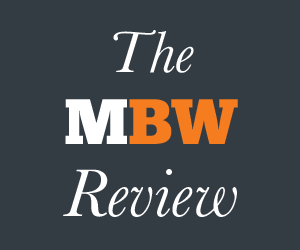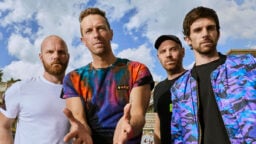
The MBW Review offers our take on some of the music biz’s biggest recent goings-on. This time, Cherie Hu looks at some of high profile casualties in the digital music space, and wonders aloud about the current licensing environment’s relationship with innovation. The MBW Review is supported by Instrumental.
The story is almost a cliché at this point: a short-form video app gains millions of users, gets acquired by a massive tech conglomerate and reshapes the music industry’s understanding of A&R and celebrity, by treating consumers as producers and stars in their own right.
Yet somehow, said app fails to find a business model, quickly loses traction along with its revenue and shuts down entirely – leaving its sprawling creator base behind.
We’ve seen two of these shutdowns over the last two years.
First was Vine, the 10-second looping video app that was acquired by Twitter in 2012 for $30 million. At its peak, Vine had over 200 million monthly active users, and its community introduced new memes and slang that still circulate in pop culture to this day, from “on fleek” to the infamous parody of R&B trio Next’s single “Too Close.”
Major labels/imprints like Island Records and Republic Records even scouted a handful of lucky musical Vine personalities for recording contracts, including Shawn Mendes and folk-pop duo Us.
But to users’ dismay, Vine shut down just four years after the Twitter acquisition, amidst increasing competition from outside companies like Snapchat. The former’s co-founder Dom Hofmann teased a possible Vine 2.0 in December 2017, but has since postponed the project indefinitely, in part because of prohibitive legal fees. (The other two Vine co-founders, Colin Kroll and Rus Yusupov, are now trying to keep HQ Trivia alive.)
The second example is Musical.ly, a selfie lip-syncing video app headquartered in Shanghai, China that had counted over 100 million monthly active users as of last month.
What was most compelling about Musical.ly to label execs and investors alike was its ability to capture one of the most valuable yet volatile age demographics: young teens. According to Apptopia, around 43% of Musical.ly’s users in the U.S. as of June were 18 years or younger.
As with Vine, major labels and agencies pounced on the opportunity to tap into this young, captive audience, inking record and touring deals with Musical.ly personalities like Jacob Sartorius, Baby Ariel and Loren Gray. In November 2017, Chinese tech company Bytedance acquired Musical.ly in a deal reportedly worth between $800 million and $1 billion, in an effort to expand the video app’s highly-engaged communities into key markets in Asia and other continents.
Yet, as recently as March 2018, Musical.ly execs were still admitting that they were hard-pressed to find an effective monetization model for their app. Meanwhile, industry execs were beginning to doubt Musical.ly’s long-term impact on culture.
In June, Bobby Simms, strategic advisor to the Midem conference, said that Musical.ly would not be considered in social-media calculations for the upcoming Midem Music Awards in 2019. “If we had held these awards two years ago, Musical.ly would have probably been included as a relevant platform,” said Simms. “But now, not so much.”
Finally, last month, Bytedance announced that it would be folding Musical.ly into TikTok, another owned-and-operated video platform focused on live-streaming. Strikingly, nearly every high-profile exec on Musical.ly’s U.S. team is no longer at Bytedance.
Former Musical.ly U.S. President Alex Hofmann left the company almost immediately after its acquisition. Musical.ly’s former VP of Digital Music Ted Suh, who stayed on until the end, now runs music partnerships at Snap.
“Will history simply repeat itself?”
Over the past few years, a swarm of other short-form video startups—including Vigo Video (formerly Flipagram, which also signed deals with all three major labels and was acquired by Bytedance, but was ultimately a flop), Triller (which has deals in place with Universal Music Group and 7digital), Snakt, Cheez, Oevo and HypeWave—have infiltrated mobile app stores in an attempt to fill the pop- and youth-culture void that Vine and Musical.ly have now left behind.
But will history simply repeat itself?
Will these startups face the same fate as their predecessors, failing to iterate forward on their product offerings or to monetize their power users’ desperation for fame—or is there an alternative, more sustainable path forward?

From its native, community-oriented features like reposts and timestamped comments to its subversive yet chart-topping “SoundCloud rap” subculture, SoundCloud has not only exerted indelible influence on DIY and major artists alike, but has also served as a crucial bridge between those two otherwise disparate circles of the music ecosystem.
As far as profits are concerned, however, SoundCloud has shared in virtually none of that upside—a harsh reality that hit the public consciousness in July 2017, when the company laid off 40% of its staff in an attempt to cut costs.
This drastic change happened in part because the company had monetized the wrong side of its two-sided marketplace, operating on the premise that listeners, not creators, were its most valuable customers.
Veering out of touch with their core creative community, SoundCloud assumed that users would gladly pounce on the opportunity to pay $5 a month for offline and ad-free listening, as well as access to paywalled major-label catalogs—the licensing deals behind which also created a steep dent in the streaming platform’s bottom line.
“One common thread connecting the financial struggles of SoundCloud, Vine and Musical.ly is that those companies tried to bolster an otherwise innovative, influential cultural product with a much more traditional, old-fashioned business model.”
Fortunately, SoundCloud seems to be in better financial shape today, under new CEO Kerry Trainor as well as a renewed focus on artist-facing analytics and community-engagement tools, rather than just consumer-facing fanfare.
But the company’s rocky journey to the present day still finds stark parallels in other burgeoning content businesses looking to sustain themselves on underground and/or self-organizing cultural activity.
In particular, one common thread connecting the financial struggles of SoundCloud, Vine and Musical.ly is that those companies tried to bolster an otherwise innovative, influential cultural product with a much more traditional, old-fashioned business model.
In the case of SoundCloud, the problem was that the company tried to finance its core underground scenes and open-distribution philosophy through paid subscriptions to mainstream, major-label products on the same platform. With Vine and Musical.ly, they arguably leaned too heavily on traditional advertising models and/or blockbuster celebrity appeal in an attempt to gain market share over their big-tech rivals, rather than providing better financial incentives to their vibrant “middle class” of creators. As a result, the creators left—and so did those companies’ foundations.
Given the blatant lack of a business model, the hefty acquisition price tags for Vine and Musical.ly—ranging from eight to ten figures, respectively—came entirely from the size and engagement of their communities. The interactions were equal parts vertical (between “micro-celebrities” and fans) and horizontal (between fans and each other), and young teens were especially enamored at the possibility that one could progress and influence pop culture simply by reacting to it.
For music marketers, Vine and Musical.ly were particularly appealing in their potential as vehicles for secondhand music promotion—akin to mobile, self-organizing versions of street teams. Artists ranging from Rihanna and Ariana Grande to Wiz Khalifa and Dae Dae have deliberately promoted their singles on Musical.ly, often incorporating hashtagged contests and challenges to see which user could make the “best” dance or lip-syncing video inspired by their songs.
“Early price points for Musical.ly ads reportedly ranged from $75,000 to $300,000 for a single day.”
Musical.ly, which had licensing deals with all three major labels and publishers, also tried to expand that promotional offering to non-music brands and agencies with a designated #HashtagChallenge ad format, alongside standard five- to 15-second vertical video ads. The company began shopping around these ad offerings in late 2017, likely out of desperation for revenue.
The one huge catch: early price points for Musical.ly ads reportedly ranged from $75,000 to $300,000 for a single day, with some bigger ad packages going for a whopping $2.5 million. That was much too expensive to advertisers who still saw Musical.ly as a largely experimental platform at the time.
Vine faced similar backlash from brands, but with a slightly different twist: its parent company Twitter already invested significant marketing dollars into its own native video formats and into livestreaming subsidiary Periscope.
Given that these two options had much more proven traction and revenue, Vine was often treated as an afterthought, both by its parent and by potential advertisers. (Ironically, Periscope, once the poster child for the future of livestreaming, is also now losing steam, ranking only at No. 72 in the Social Networking category in the iOS App Store as of last week.)
Another area where Vine and Musical.ly failed was keeping their creators and personalities on their platform with fair, sustainable financial incentives.
Yes, a small handful of Vine and Musical.ly personalities landed major-label deals, which likely provided beefy (if short-term) financial benefits in the form of the typical recording advance. But that pipeline was certainly the exception rather than the rule, and many other viable stars who were left in the dust without any spare change took notice.
For instance, in fall 2015, 18 of Vine’s top creators held a meeting with Vine representatives demanding better compensation. The proposal: in exchange for each of those creators producing 12 pieces of original Vine content a month, Vine would pay each creator an upfront fee of $1.2 million, roll out more product updates after several months of stagnation and open up a more direct line of communication to the company. Inevitably, Vine never made those payments—compelling many of those creators to shift more of their attention to YouTube, Instagram and Snapchat. Many of those creators’ dozens of millions of followers, well, followed.
“One major-label source tells me that Musical.ly’s entertainment partnerships team was insistent on inking deals with high-profile artists like Drake.”
With Musical.ly, its skewed age demographic also ended up becoming its largest handicap. At its core, it’s classic high-school psychology: if you’re a teenager trying to gain social clout among your friends and peers, the last thing you want to be is the oldest person on a social-media app. Hence, several key Musical.ly users outgrew the app over the years, flocking instead to products like Instagram that attracted engagement from a wider variety of age groups; Musical.ly failed to grow and iterate along with them. In fact, several Musical.ly stars immediately began broadcasting on Instagram’s longform IGTV once the latter launched in June.
What’s more, Musical.ly’s U.S. expansion strategy allegedly focused too hard on securing outside A-list celebrity partnerships, rather than nurturing and strengthening the “middle” tier of creators that already had millions of platform-native followers.
One major-label source tells me that Musical.ly’s entertainment partnerships team was insistent on inking deals with high-profile artists like Drake, who arguably did not even need the Musical.ly audience in the first place.
In their early stages, short-form video apps and young, middle-tier creators need each other’s help more than ever.
The apps want to tap into niche audiences with authentic, high-quality content, while the creators want to make some extra income through lucrative content deals with said startups, and reach potential audiences of millions.
That said, these young creators are also becoming savvier than ever, and are acutely aware of just how volatile and unpredictable the video startup lifecycle really is. As a result, they not only continually hustle for new content deals with other startups, but also increasingly view these companies merely as stepping stones to more sustainable careers on larger platforms with better reach.
For the most serious personalities, YouTube, Instagram and Snapchat aren’t just “alternatives”—they’re the end goal.
Indeed, the deaths of Vine and Musical.ly are inseparable from rivalrous product developments elsewhere in Silicon Valley.

Crucially, unlike most of their Western competitors, both TikTok and Twitch enable microtransactions to creators in the form of live “tips” or donations, potentially widening the revenue pie for artists far beyond just streaming royalties alone.
Facebook’s music team has secured licensing deals with nearly all indie and major labels, publishers and PROs, and is shelling out a whopping $500 million to these rights holders over the next two years on a pro-rata basis (including $45 million for indie publishers alone). The impact of these deals has reverberated across all of Facebook’s properties, with Instagram launching integrated “music sticker” features earlier this summer and its parent company testing a Musical.ly look-alike product, titled Lip Sync Live.
Importantly, Facebook’s deals are U.S.-only for now, while those with Instagram are structured as more experimental “test” deals, with no residual streaming-like revenue (e.g. revenue share from content ID) in place yet.
This means that there’s still an opportunity for international video apps like TikTok—which has 500 million global monthly active users alone, and likely added many more millions of users through the merge with Musical.ly—to secure more market share in Asian and other fast-growing markets ahead of their Western counterparts.
Of course, if and when Facebook upgrades to an all-inclusive worldwide deal with rights holders, the competition will become much more intense.
As for the smaller video startups struggling to stay afloat, their best bet at survival will be learning crucial lessons from the demise of Vine, Musical.ly and others:
- Continue to iterate forward on your product so you can grow alongside your users;
- Mold your business model to your community, not the other way around, and
- Hire employees who have equal experience and passion about entertainment, pop culture and technology, and who can make informed decisions in all of those areas simultaneously—not favoring one side over the others.
Otherwise, these startups will continue to be as ephemeral as their own content—and continue to hang their long-term support from the music industry in the balance.







